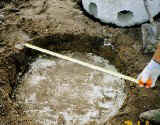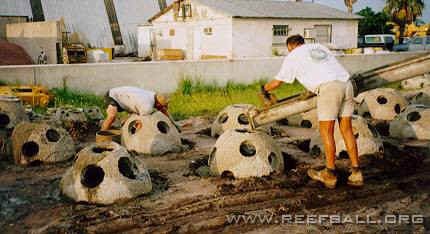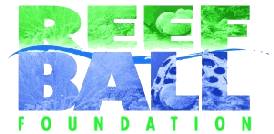
Reef Balls can be made from our standard molds in many different ways. We call these styles, it's one thing that is great about doing designed reefs in that you get to customize your reef for your specific needs. When you combine all of the various sizes Reef Balls are available in with these style adaptations, one can design a reef for nearly any artificial reef application. The important thing to grasp is that a "Reef Ball" is not a specific design, but it is a specific technology and process to get to optimal module for your project. It has taken us over a decade of continually refining this process to make Reef Balls the gold standard in artificial reef design. There will be hundreds of "clever" designs you will tempted by, by instinct we all love to think up new ways to design things. But be warned, the sea is a complex and unforgiving place. Many of our newer styles....such as the stalagmite style...have not yet passed the test of time. If you want to use any new design....we recommend you just do one or two...give them at least 5 years and a good storm or two before you commit to using them on a large scale. We make the same warning for any new "clever" design you come across. Engineering, bio-engineering, applied science, monitoring, local adaptation and and long term repeated success are hallmarks of successful reef building.
Standard Style
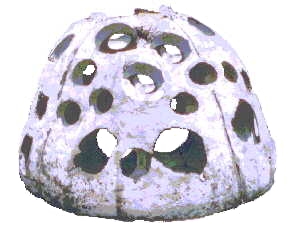 Our standard size and shape is the smallest amount of concrete you can put in the water for their size and still remain practically stable. It's actually more stable than a solid cube of concrete the same sizel. The standard style is are also the easiest to handle, easiest to build, and can be floated with an internal bladder.
Our standard size and shape is the smallest amount of concrete you can put in the water for their size and still remain practically stable. It's actually more stable than a solid cube of concrete the same sizel. The standard style is are also the easiest to handle, easiest to build, and can be floated with an internal bladder.
For 80% of all reef building projects, this is the style of choice for both economy, efficiency, stability and ease of construction/deployment. No design has been more tested and proven. It's considered the default scientific control for artificial reef science because the standard style's use is so ubiquitous in the word. From a visual and design perspective, it mimics the oldest living corals in the world (massive corals like brain coral). Mother nature takes the credit for being the original designer of this style.
Layer Cake Style
Are you in a hurry....do you want to mimic the complexity of a coral reef without waiting on the corals to do their work to bring complexity? When you can't wait for mother nature to create extra complexity, "Layer Cakes" are the way to go. They are heavy and a bit difficult to handle but for many projects that is not an issue if the right equipment is available. This design has it's roots in Harold Hudson's designs. Harold is known as "The Reef Doctor" and he was a pioneer in both the field of coral planting and designed artificial reefs. We dedicated a reef to him in the Cayman Islands and we credit him with the design of the Layer Cakes with our only contribution being the adapting to our molds and rounded shape;.
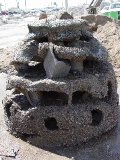
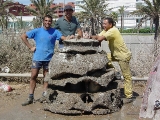
Lobster Cake Style
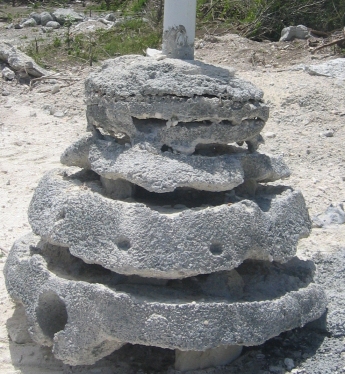 Lobster Cakes are a specific type of Layer cake. They are designed with thin layers at the top and progressively larger ledges at the bottom. The idea is to settle larval lobster from a standard scientific "Witham Collectors" (used to study larval lobster populations) and to provide cavities for each successive stages of growth. Furthermore, the inside of each ledge is larger than the opening. This lets the lobsters form a circle around the center with their antenna sticking out to defend against octopus, moray ell, and shark attacks (the most common lobster predictors if you don't count humans).
Lobster Cakes are a specific type of Layer cake. They are designed with thin layers at the top and progressively larger ledges at the bottom. The idea is to settle larval lobster from a standard scientific "Witham Collectors" (used to study larval lobster populations) and to provide cavities for each successive stages of growth. Furthermore, the inside of each ledge is larger than the opening. This lets the lobsters form a circle around the center with their antenna sticking out to defend against octopus, moray ell, and shark attacks (the most common lobster predictors if you don't count humans).
This design gets pretty species specific, and requires scientific study prior to deployment to assess where larval lobster are abundant in the water column. There are lots of specific adaptations base on your local needs such as a central feeding tube that can be used shallow water aqua culture installations.
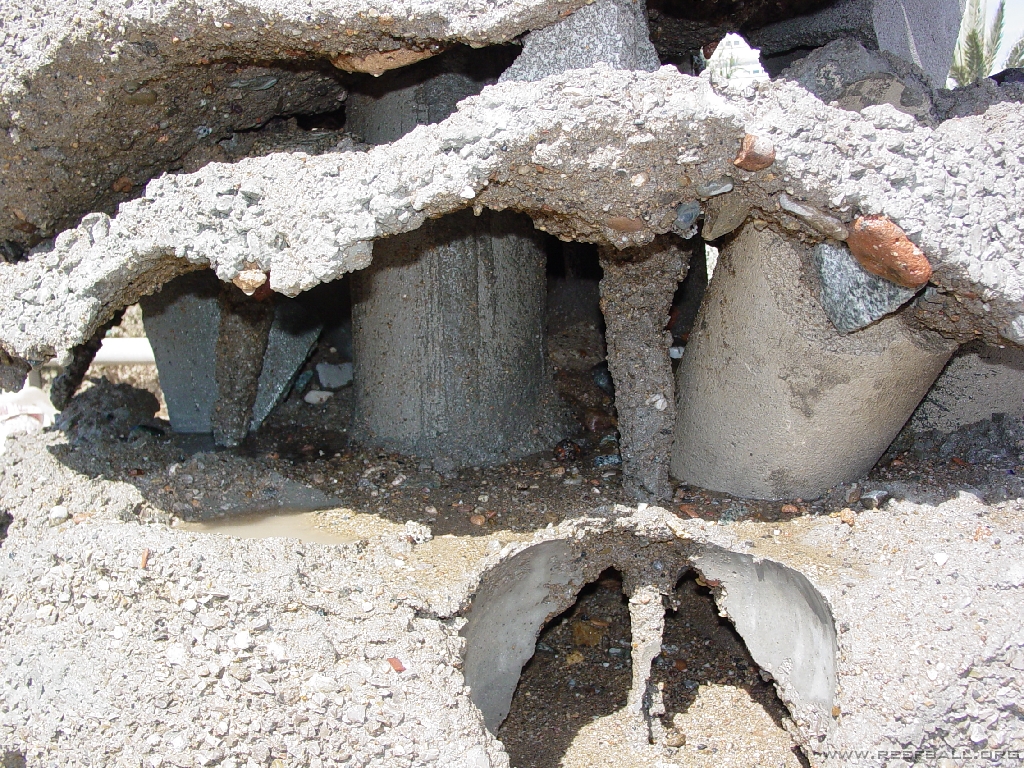 Stalactites Style
Stalactites Style
You can modify your Layer Cakes with advanced techniques to create stalactites in the void spaces.
This technique can also be used on hybrid Standard/Layer Cake style Reef Balls.
Stalagmite Style
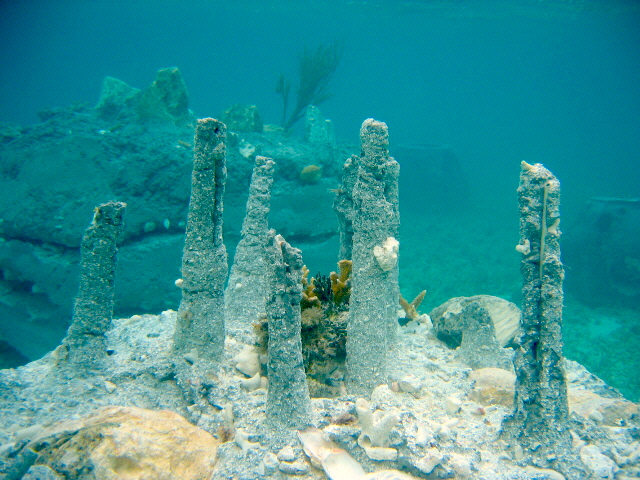
Turn your molds upside down when you cast Layer Cakes and use the Stalactites method to produce upward reaching stalagmites to mimic branching corals. These require fiberglass rebar for strength. Ask your trainer for to show you how to make them if you are interested...however, we don't have enough experience to know the long term performance of this style.
Predator Exclusion


October 24, 2007
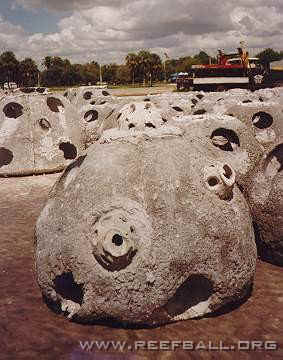
There are a variety of techniques to make Reef Balls safer for juvenile fish. Screens or Model Reef Ball over the holes, Geo-webbing, and even adding cinder blocks or empty conch shells to the void spaces of Reef Balls work well.
Net Deterrent Styles
Ilegal trawling and netting is a common threat to reefs, especially in countries where enforcement resources are limited. Larger standard sized Reef Balls are usually sufficient to deter artisanal nets, but larger commercial net trawlers sometimes require more force to stop them. The styles featured below are useful to grab nets whereas the various anchoring styles are often combine with these designs for the largest nets.
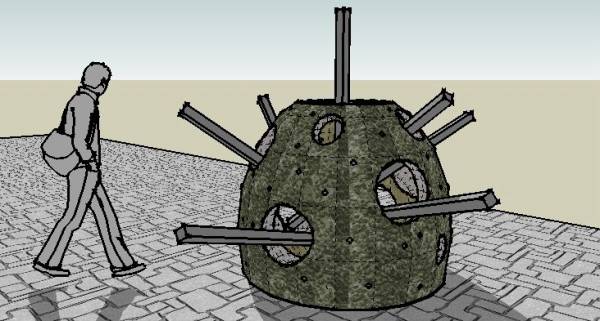
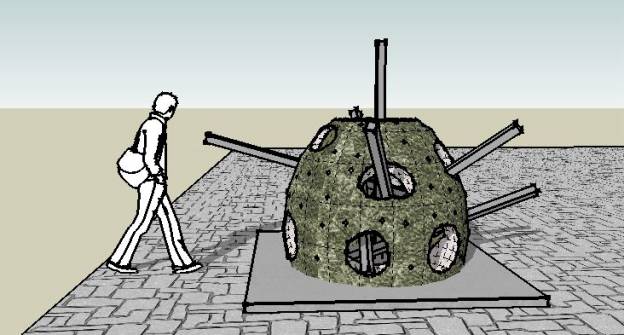
Sea grass (Requires mold inserts)
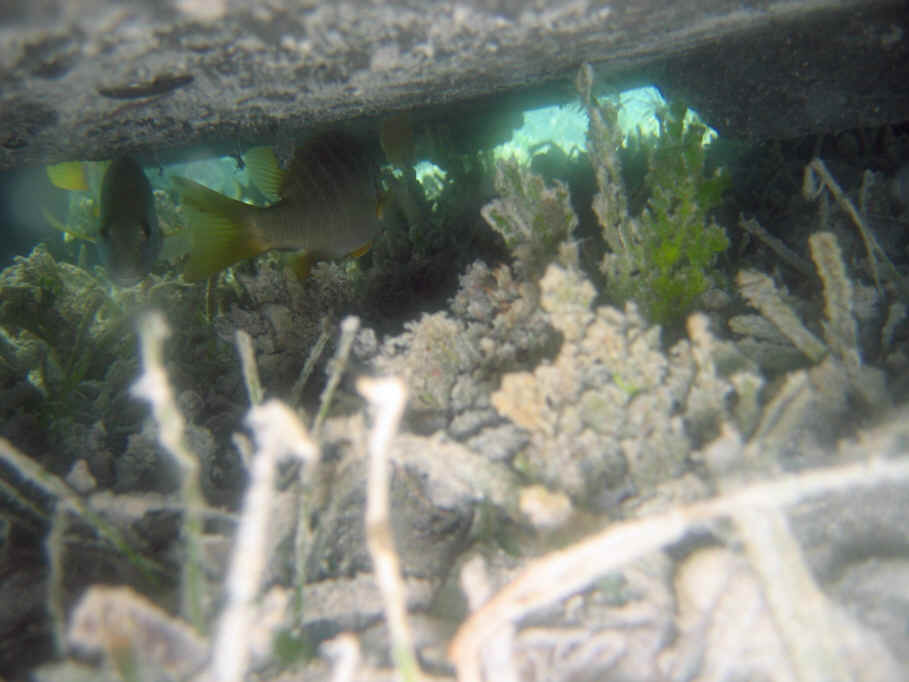
By making a special base, you can create Reef Balls that stand off the sea grass floor and allow light to penetrate to keep the sea grasses alive allowing deployment on sea grass beds when needed.
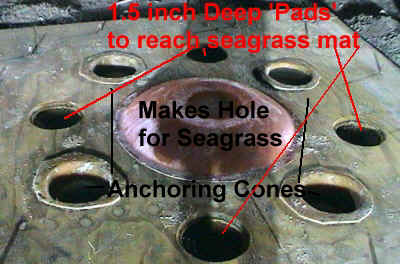
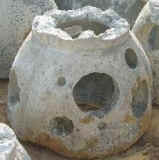 Abalone Surface
Abalone Surface
Although the standard Reef Balls use a rough surface area to aid in coral recruitment, smooth surfaces can be made to better accommodate some surface eating animals like Abalone.
Oyster Surface
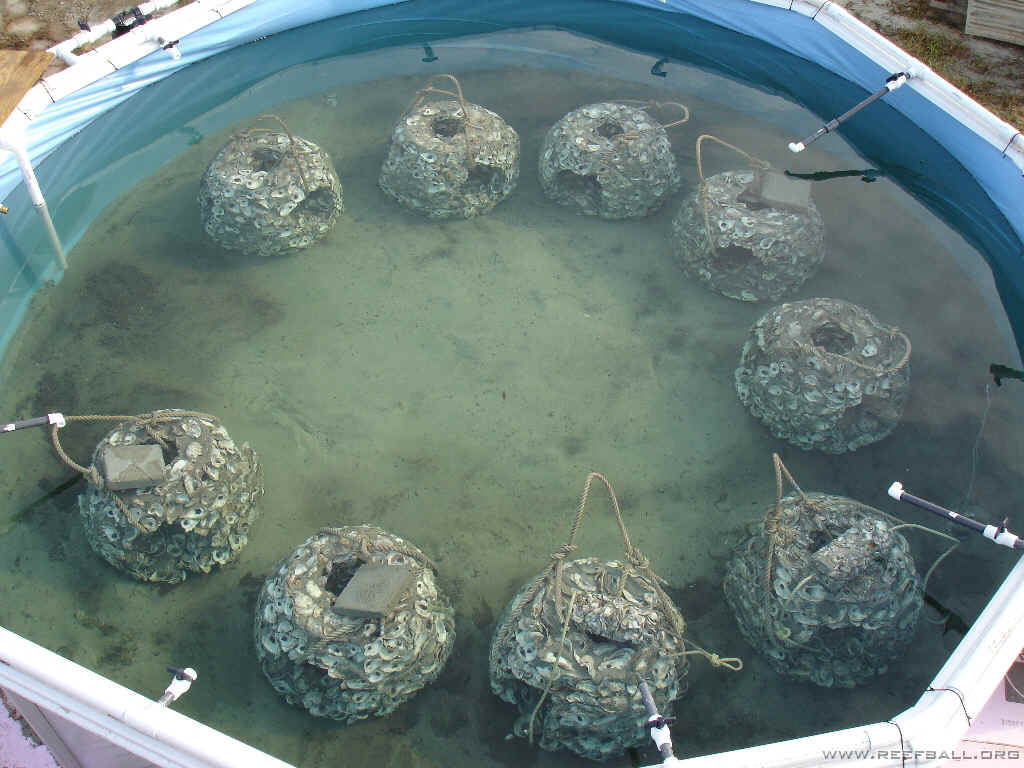
Oysters or clam shells can be incorporated on the surface of Reef Balls to create surfaces that are better for oyster recruitment.
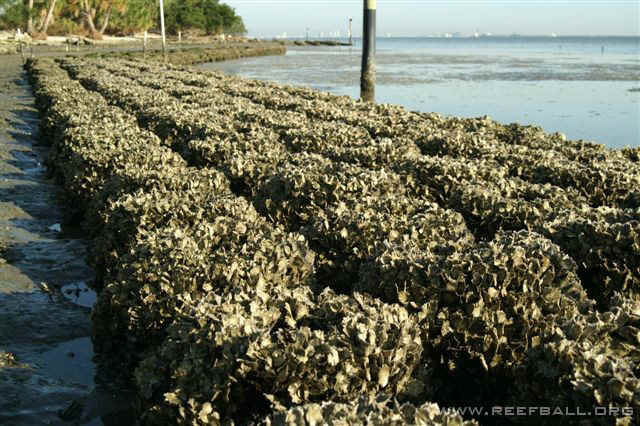
Custom Sculptures


Reef Ball technologies can be used to create custom shapes and even sculptures. Concrete mix designs, coral adaper plug features, consulting with artists on stability and suitable materials, anchoring options, bio-engineering (that is making the sculpture take into account how the reef will function biologically) and deployment assistance are all areas where Reef Ball Foundation can assist clients that need a human attraction componet to their reef designs. We also have a Reef Ball discount program with Guardian of the Reefs artist Simon Morris and are working with Jason De Claires Taylor to provide sculptures that already incorporate Reef Ball technologies.
Eternal Reef Styles
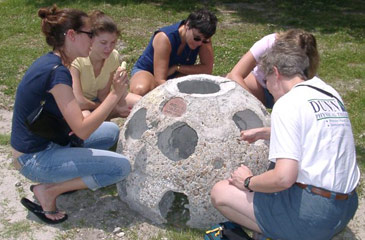 Using the highest possible strength concretes, Eternal Reefs can include human cremated remains. They also navy brass plaques to commemorate loved ones. They have unique names for standard Reef Ball sizes; Mariner Memorial Reef (Ultra Ball size) , Nautilus Memorial Reef (Pallet Ball Size) and Aquarius Memorial Reef (Bay Ball Size). Although there styles are similar to Standard Style Reef Balls, they use even higher quality concrete and higher quality control standards than most Reef Ball projects as you could expect when dealing with cremains.
Using the highest possible strength concretes, Eternal Reefs can include human cremated remains. They also navy brass plaques to commemorate loved ones. They have unique names for standard Reef Ball sizes; Mariner Memorial Reef (Ultra Ball size) , Nautilus Memorial Reef (Pallet Ball Size) and Aquarius Memorial Reef (Bay Ball Size). Although there styles are similar to Standard Style Reef Balls, they use even higher quality concrete and higher quality control standards than most Reef Ball projects as you could expect when dealing with cremains.
Red Mangrove Planter Style
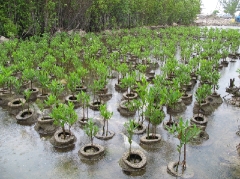
Use any size Reef Ball lined with burlap and packed with mangrove muck and slow release osmocote fertilizers to serve as a stable pot to start red mangrove seedlings. Pick the size of Reef Ball that is right for the wrack line and tide range of your area. You can go even further with this by using VERY specialized Red Mangrove planting system (called Armored Cultivator Pot style) when you are in high energy zones. Go to Mangrove Solutions for more information .
Anchor Options
You can create a variety of pre-built holes near the base of Reef Balls to accommodate fiberglass rebar to concrete piling anchoring systems. Molds need to be modified slightly to accommodate some anchoring options. Standard Style Reef Balls cannot be overturned by waves, but in shallow water and especially on flat or smooth hard bottoms they can inch along the sea floor when large waves combine with a strong current. Many anchoring options require different casting techniques or mold modifications so we classify them as a style.
Fiberglass Rebar Anchors
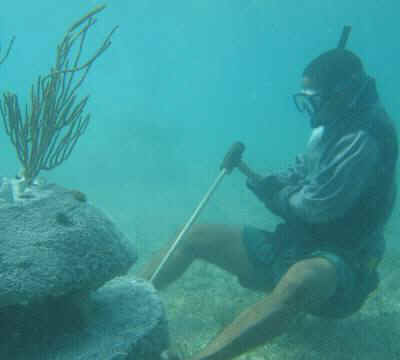 Fiberglass rebar is the anchor of choice on hard bottoms where the risk of horizontal movement is the greatest. Typically, #5 rebar (5/8") in diameter is drilled or hammered into the sea floor at about a 70 degree angle. Most projects using this anchoring style build in 4 pre cast anchoring holds and aim to put at least 2 opposing rebar anchors in each Reef Ball. Anchoring holes are created by using PVC pipe in the base of the molds which are removed before the concrete fully sets. In projects where marginal horizontal movement is expected, a single piece of rebar, placed in the center bottom hole of a standard style Reef Ball is used and this eliminates having to have preformed anchor holes. Standard epoxy coated steel rebar can be used when fiberglass rebar is not available but the expected life span of iron rebar is far less than the expected life span of a Reef Ball so iron rebar should be considered a temporary option. We can supply fiberglass rebar with your mold order or here is a list of fiberglass rebar suppliers.
Fiberglass rebar is the anchor of choice on hard bottoms where the risk of horizontal movement is the greatest. Typically, #5 rebar (5/8") in diameter is drilled or hammered into the sea floor at about a 70 degree angle. Most projects using this anchoring style build in 4 pre cast anchoring holds and aim to put at least 2 opposing rebar anchors in each Reef Ball. Anchoring holes are created by using PVC pipe in the base of the molds which are removed before the concrete fully sets. In projects where marginal horizontal movement is expected, a single piece of rebar, placed in the center bottom hole of a standard style Reef Ball is used and this eliminates having to have preformed anchor holes. Standard epoxy coated steel rebar can be used when fiberglass rebar is not available but the expected life span of iron rebar is far less than the expected life span of a Reef Ball so iron rebar should be considered a temporary option. We can supply fiberglass rebar with your mold order or here is a list of fiberglass rebar suppliers.
Horizontal Stabilizer Feet


Pre-built footers can be added to reduce horizontal movement in high surge areas. They shape of the footer is determined by bottom hardness and type. The thicker cone to the left was used in softer sediments whereas the spike on the right was used in very hard sediment. Spikes must be re-enforced with fiberglass rebar.
Anti-Trawling Piles
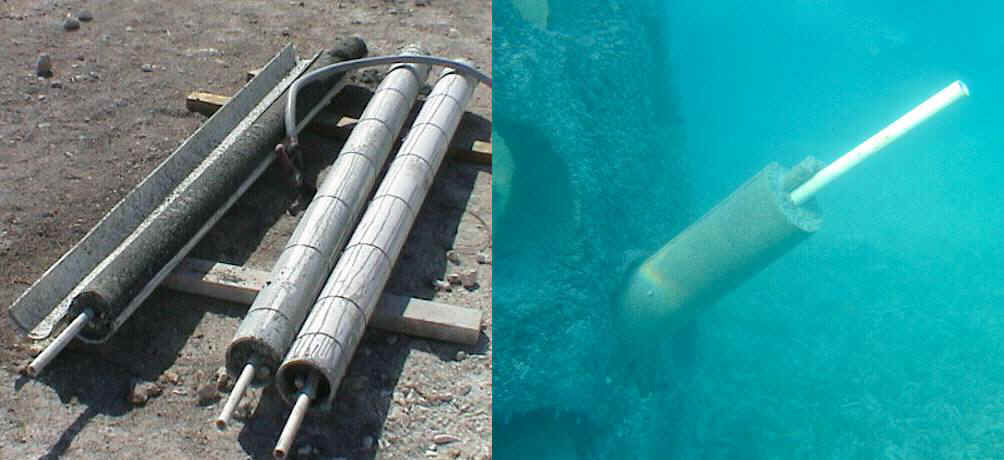
Concrete or steel pilings can be inserted by jet or during construction to make Reef Balls that are resistant to or able to damage trawling nets.
Piling Supports

The top and bottom holes of Reef Balls can be built to exact specifications to allow a dock piling or sign piling to fit exactly to the Reef Ball to add fish habitat to piles while helping to stabilize them.
Slab Units
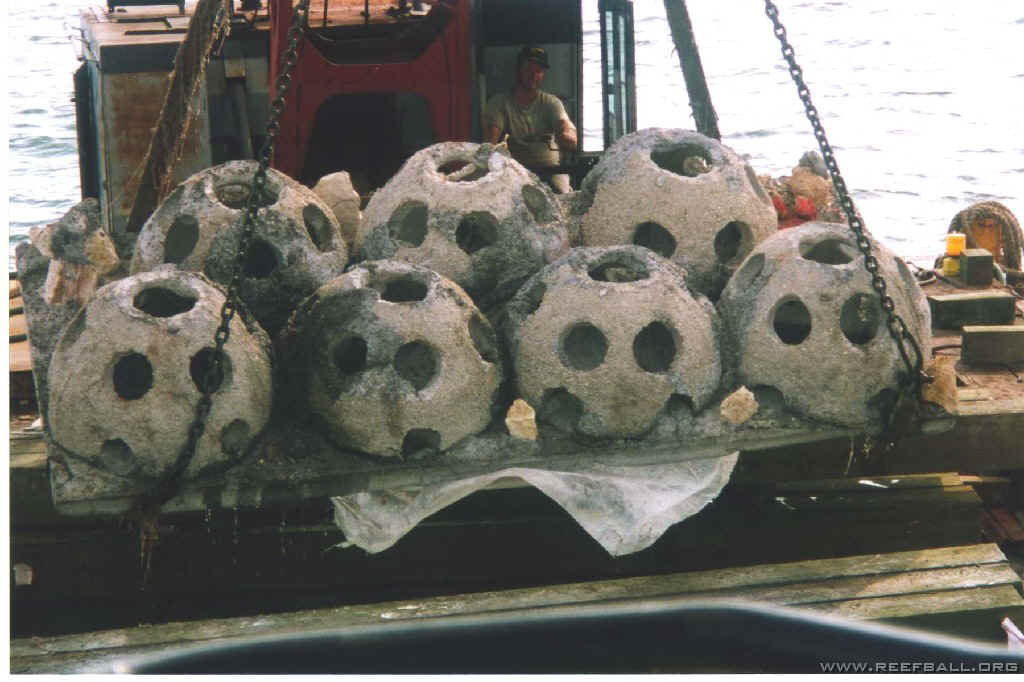
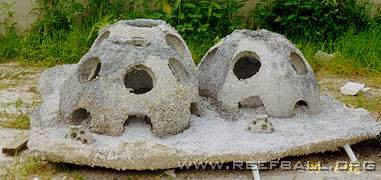
Multiple Reef Balls can be incorporated into single larger slab units if desired.
Extended Bottom
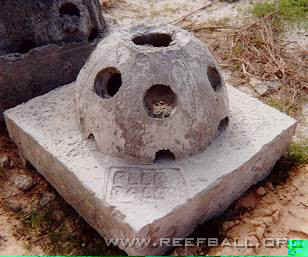
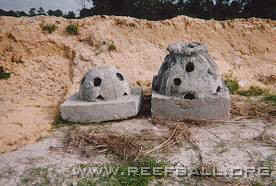
You can add concrete footers of any shape to Reef Balls to increase weight, decrease subsidence on soft bottoms or to provide a space for disposal of waste concrete or other products like tire chips.
Contact us for additional Styles including
Octopus modifications
Solid Bottoms
Fly-ash Disposal
Stacked Reef Balls,
and others.
